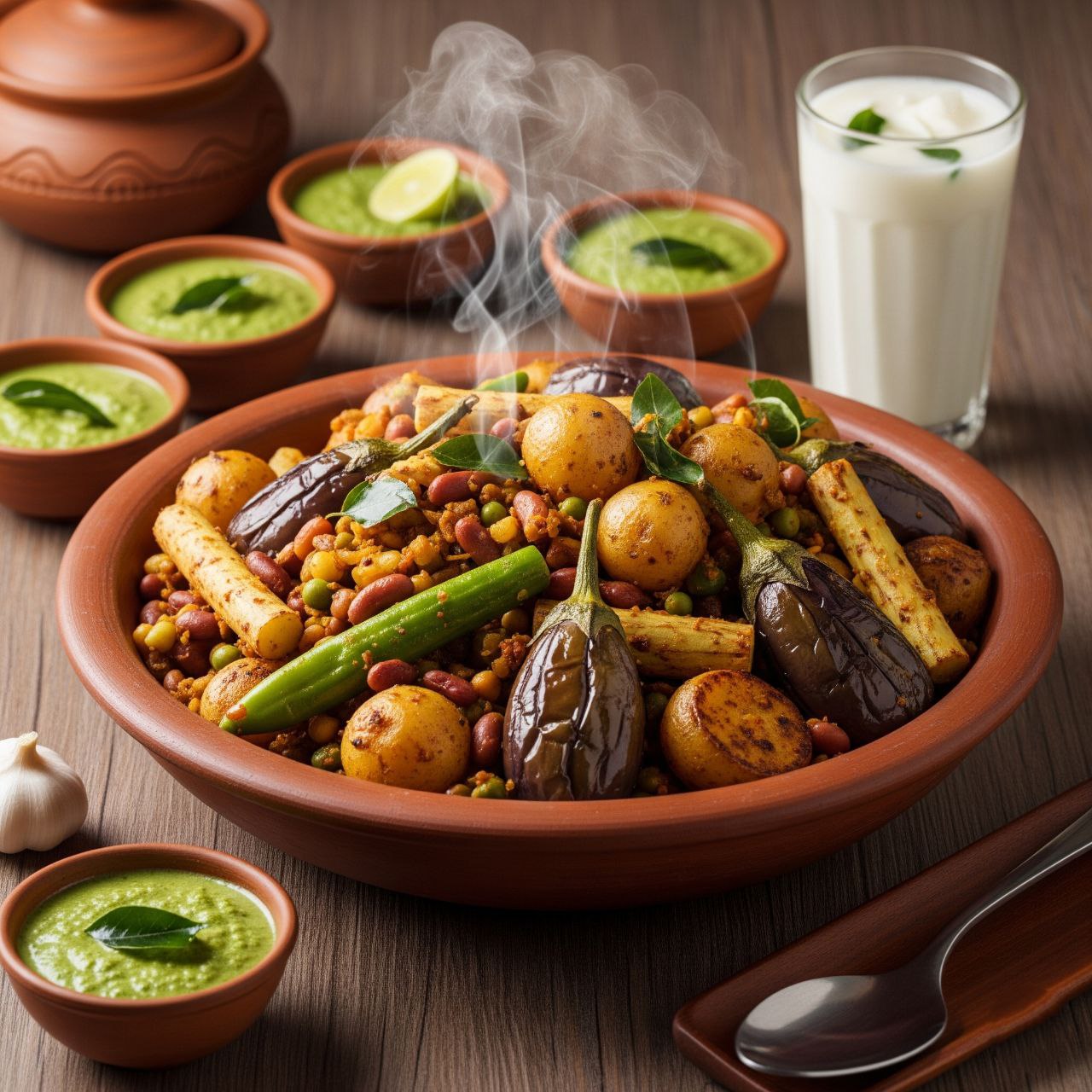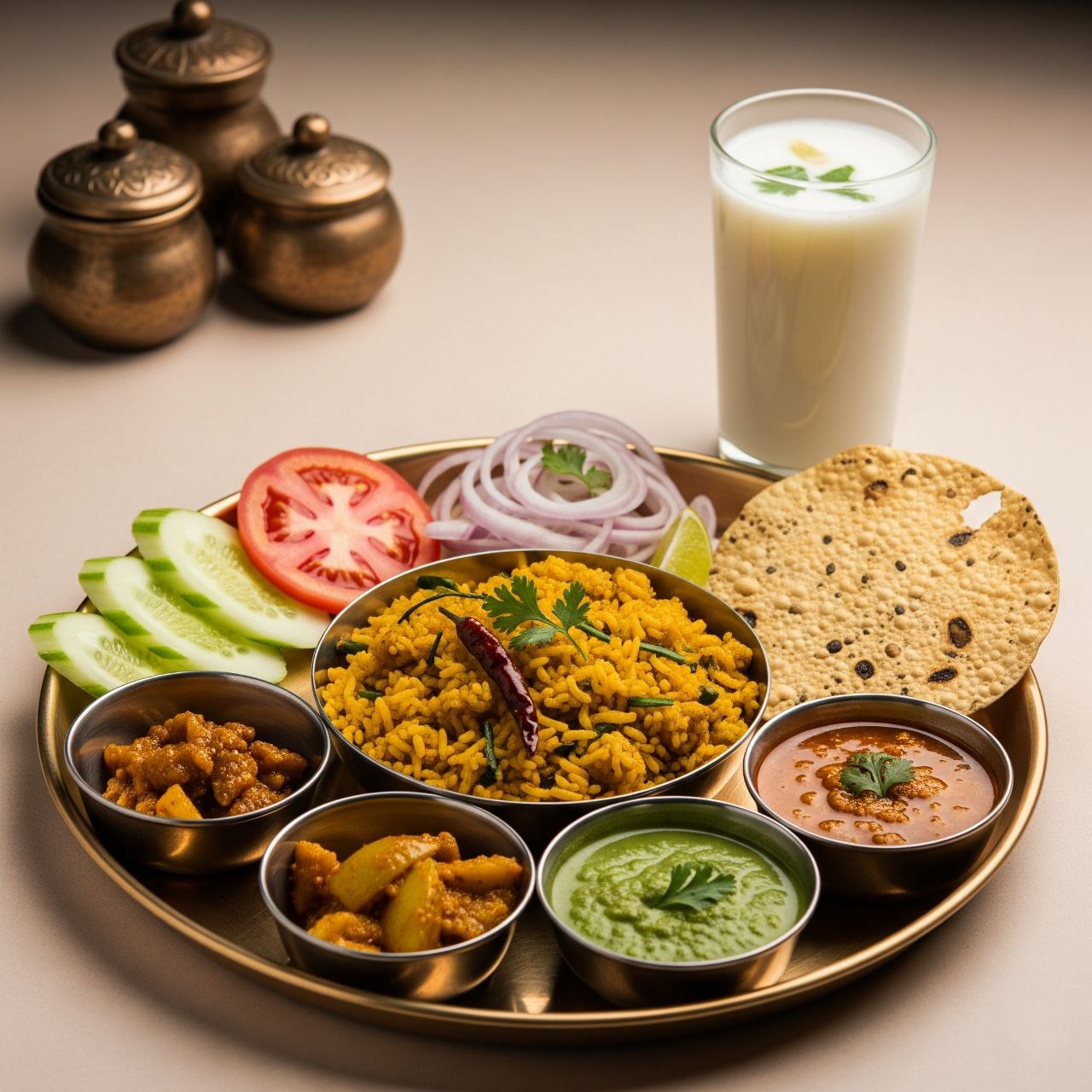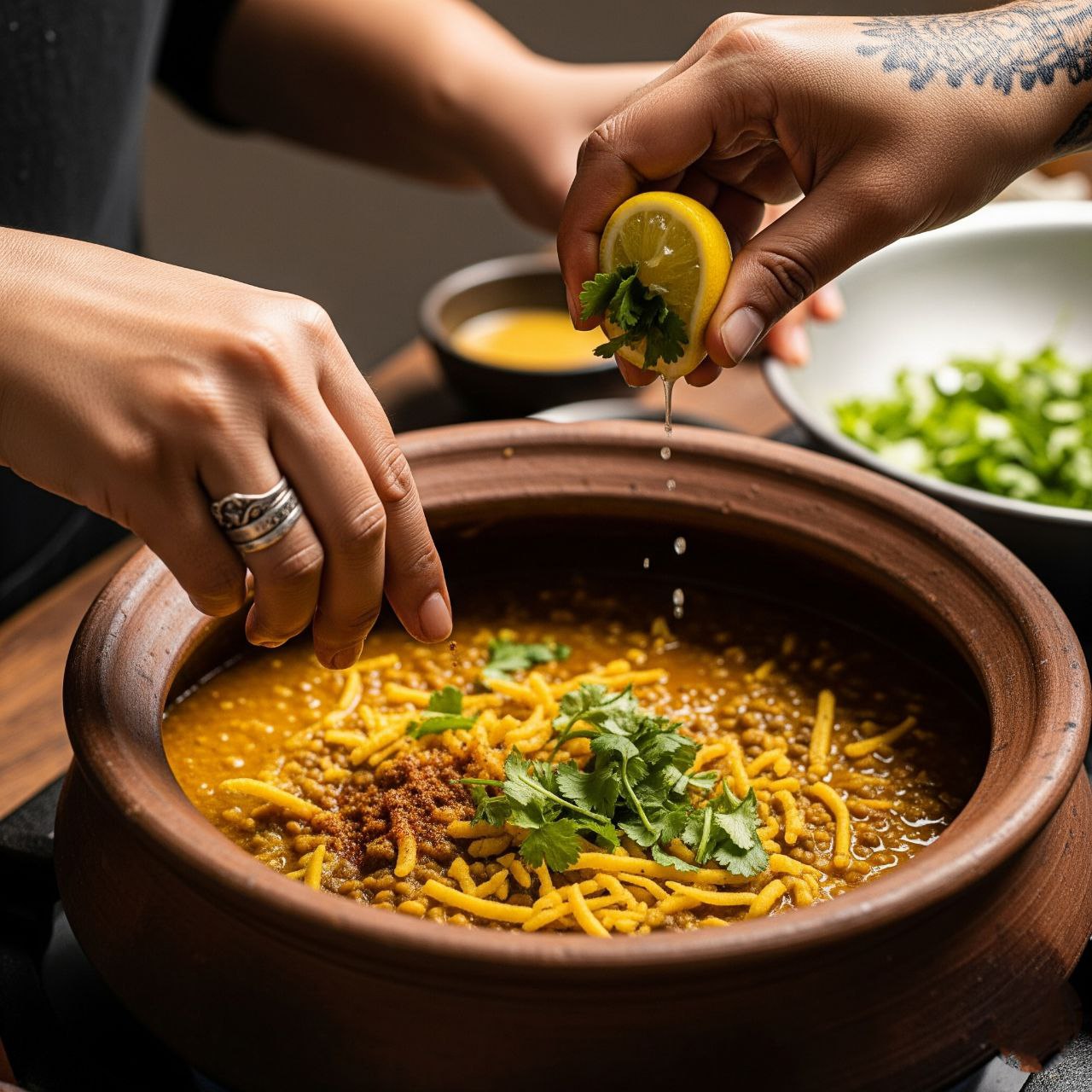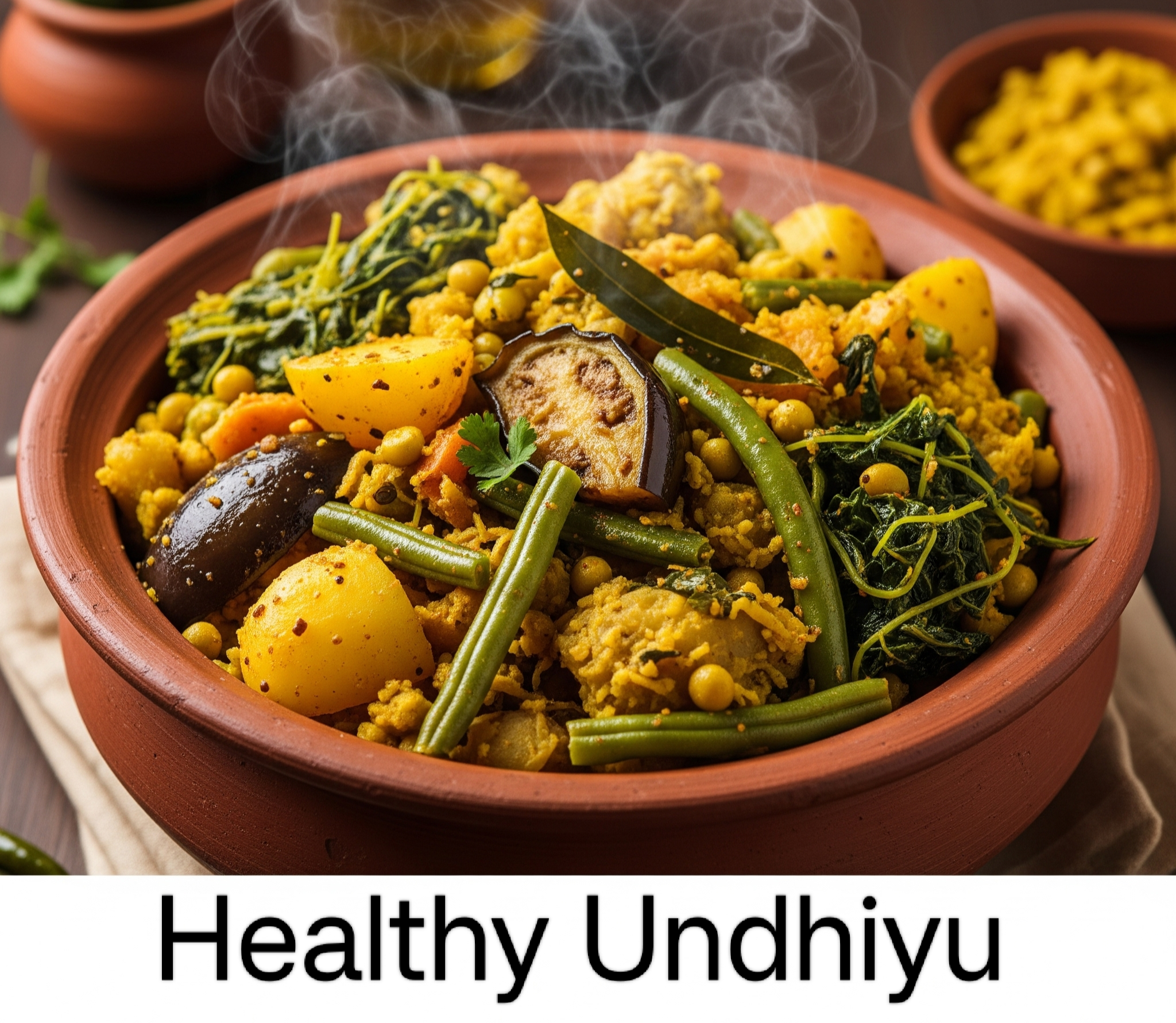Diptiben’s Famous Valsad Dungri Ubadiyu: A Traditional Winter Delicacy
Valsad Dungri Diptiben’s Ubadiyu Recipe
Valsad, a beautiful region in Gujarat, is known for its rich culture and delicious cuisine. During the cold winter evenings, the earthy aroma of fresh vegetables permeates the air, and among these delights, Diptiben’s famous Valsad Dungri Ubadiyu holds a special place. This traditional dish isn’t just tasty; it’s also highly regarded for its heritage and unique cooking method. Ubadiyu is typically prepared by slow-roasting in an earthen pot (matla) over a slow fire of cow dung cakes (chhana), which imparts a distinct smoky flavor and aroma.
In this article, we’ll delve into the complete recipe of Diptiben’s famous Valsad Dungri Ubadiyu, its history, and the art behind its preparation.
Ubadiyu: A Part of Tradition
Ubadiyu is a popular winter dish in the southern parts of Gujarat, especially in the Valsad and Surat districts. The word “Ubadiyu” comes from “ubadવું,” which means “to roast” or “to cook in an inverted pot.” This dish is made from a mix of fresh, farm-to-table vegetables, root vegetables, and special spices. Traditionally, farmers would prepare this dish while working in their fields. They would dig a pit, light cow dung cakes, and slow-roast the vegetables filled in an earthen pot. Diptiben’s Ubadiyu is an excellent example of this tradition, preserving both flavor and health benefits through traditional methods.
Diptiben’s Famous Ubadiyu: Key Features
Here are some of the key features that make Diptiben’s Ubadiyu famous:
- Fresh Vegetables: They source fresh, seasonal vegetables directly from local farmers, which is the primary foundation for the Ubadiyu’s flavor.
- Unique Spice Blend: The green masala used in their Ubadiyu is a secret to their special recipe. This masala contains a balanced blend of fresh green garlic, ginger, chilies, coriander, and specific dry spices.
- Traditional Method: They prepare Ubadiyu only in earthen pots over a slow fire of cow dung cakes, which gives it a unique smoky flavor that cannot be achieved by any other method.
- Slow Cooking: Slow roasting for an extended period ensures that the vegetables are cooked thoroughly from the inside, allowing the flavors of the spices to deeply infuse into them.
Diptiben’s Famous Ubadiyu Recipe: Step-by-Step Guide
This recipe attempts to replicate the taste and method of Diptiben’s Ubadiyu as closely as possible.
Ingredients:
Main Vegetables:
- Baby Potatoes: 500 grams (peeled and slit)
- Purple Yam (Ratalu): 250 grams (cut into small pieces)
- Sweet Potatoes (Shakkariya): 250 grams (cut into small pieces)
- Small Brinjals (for stuffing): 5-6 (slit)
- Raw Bananas: 2 (cut into large pieces)
- Fresh Pigeon Peas (Tuver Dana): 1.5 cups
- Green Peas: 1 cup
- Surati Papdi Seeds (or other thick flat bean seeds): 1.5 cups
- Kand (Purple Yam, optional): 150-200 grams (cut into pieces)

Special Green Masala (for stuffing and mixing):
- Green Garlic: 1.5 cups (finely chopped)
- Ginger: 2-3 inch piece (grated or pasted)
- Green Chilies: 6-8 (as per spice preference, finely chopped or pasted)
- Fresh Coriander: 1 cup (finely chopped)
- Carom Seeds (Ajmo): 3 teaspoons (lightly crushed, for flavor and digestion)
- Turmeric Powder: 1.5 teaspoons
- Coriander-Cumin Powder: 3 teaspoons
- Garam Masala: 1.5 teaspoons
- Red Chili Powder: 1 teaspoon (optional, for extra heat)
- Salt: To taste (approx. 3-4 teaspoons)
- Sugar: 1.5 teaspoons (to balance flavors)
- Lemon Juice: 3 teaspoons
- Sesame Oil (or other cooking oil): 6-8 tablespoons (to bind the masala and add moisture to vegetables)

For Roasting Ubadiyu:
- Large Earthen Pot (Matla): 1 (large enough to hold all vegetables)
- Sweet Neem Leaves (Meetha Limda na Paan) or Ashoka Leaves: A generous handful (to layer at the bottom of the pot)
- Cow Dung Cakes (Chhana) or Charcoal: Sufficient quantity (approx. 5-7 kg, for roasting)
- Old Cloth Bags (Kothla) or Banana Leaves: To seal the mouth of the pot
- Clay/Mud: To seal the pot’s opening (optional)

Preparation Method:
1. Prepare the Green Masala:
- In a large bowl, combine finely chopped green garlic, grated ginger, finely chopped green chilies, and finely chopped coriander.
- Add the lightly crushed carom seeds, turmeric powder, coriander-cumin powder, garam masala, red chili powder (if using), salt, sugar, and lemon juice.
- Finally, add the sesame oil and mix all the ingredients thoroughly by hand. The masala should be moist and aromatic.

2. Prepare and Stuff the Vegetables:
- Wash all vegetables thoroughly with water.
- Make slits in the baby potatoes, purple yam, sweet potatoes, brinjals, and kand. Be careful not to cut them completely through; just enough to stuff the masala inside.
- Take a generous portion of the prepared green masala and stuff it well into each slit potato, purple yam, sweet potato, brinjal, and kand. For vegetables that cannot be stuffed (like raw banana pieces), mix them with the remaining masala.
- Mix the fresh pigeon peas, green peas, and papdi seeds with the remaining green masala in a large bowl, ensuring each bean is well-coated.

3. Fill the Earthen Pot:
- Take a clean earthen pot. Apply a little oil to the inner surface of the pot.
- Lay a thick layer of sweet neem leaves (or Ashoka leaves) at the bottom of the pot. These leaves impart a unique aroma and slight bitterness to the Ubadiyu, deepening its flavor.
- First, arrange the stuffed potatoes, purple yam, sweet potatoes, kand, and brinjals on top of the leaf layer.
- Then, add the raw banana pieces and the masala-coated beans (pigeon peas, green peas, papdi) on top. Arrange all the vegetables properly to fill the pot. Be careful not to overfill or compress the pot too much; leave a little space.

4. Seal the Pot:
- Cover the mouth of the earthen pot tightly with a thick old cloth bag or banana leaves.
- Then, seal the cloth securely around the opening with mud or thick string to prevent steam from escaping during roasting, allowing the vegetables to cook well inside.

5. Roast the Ubadiyu (The Most Crucial Part):
- In an open space (like a garden or open yard), dig a small pit or arrange cow dung cakes in a circular pattern on the ground.
- Light the cow dung cakes to prepare hot embers. The embers should be completely red-hot and glowing.
- Once the embers are sufficiently hot, carefully place the filled earthen pot upside down (mouth facing downwards) directly on top of these embers.
- Arrange more cow dung cake embers around the pot, ensuring it is heated evenly from all sides.
- Allow the Ubadiyu to roast over a slow flame for approximately 1.5 to 2.5 hours. The roasting time depends on the quantity of vegetables and the heat of the embers.
- Carefully rotate the pot periodically to ensure even cooking and prevent the vegetables from sticking.
- To check if the Ubadiyu is cooked, pay attention to the aroma emanating from the pot. When the fragrance of the spices and vegetables becomes prominent and the pot is extremely hot, it usually indicates that the Ubadiyu is ready. You can also insert a small wooden stick or skewer into the pot to check if the vegetables are tender.

6. Serving:
- Once the Ubadiyu is roasted, carefully remove the pot from the embers.
- Carefully break the seal and transfer the roasted, hot vegetables into a large serving dish.
- Diptiben’s famous Valsad Dungri Ubadiyu is best served hot with green garlic chutney, buttermilk (chaas), and fresh flatbreads (rotla). To fully enjoy its flavor, consume it as hot as possible.

Some Important Tips:
- Vegetable Selection: Use small and fresh vegetables for Ubadiyu. They cook faster and have a better flavor.
- Spice Proportion: The spice proportions can be adjusted according to your preference for heat and taste. Green garlic is the key flavor in Ubadiyu, so use it generously.
- Slow Cooking: The unique taste of Ubadiyu comes from slow roasting for an extended period. Rushing the process might leave vegetables undercooked and reduce the smoky flavor.
- Safety: Exercise extreme caution when working with hot cow dung cakes and the hot earthen pot. Keep children away.
- Alternative Method: If you don’t have access to an earthen pot and cow dung cakes, you can prepare Ubadiyu in a large, heavy-bottomed pressure cooker or an oven on low heat. However, the taste won’t be exactly the same as traditionally prepared Ubadiyu. When cooking in a pressure cooker, add a little water and neem leaves at the bottom, place a stand, then put the pot or container with the vegetables on top, and cook on low heat for a long time.
Diptiben’s Valsad Dungri Ubadiyu is not just a dish; it’s an experience. It’s an integral part of Gujarati culinary heritage that significantly enhances the joy of winter. Through this recipe, you too can enjoy this traditional and delicious delicacy at home.
- Authentic Gujarati Handvo Recipe – 2025
- The Ultimate Medu Vada Recipe – 2025
- Authentic Falafel Recipe:2025
- Healthy Undhiyu Recipe: A Wholesome Gujarati Winter Delicacy2025
- Instant Rava Uttapam: Quick & Delicious South Indian Pancakes – 2025
- Aauthentic Italian Margherita Pizza Recipe – A Taste of Italy at Home 2025
- Paneer Handi Recipe (Restaurant Style)











